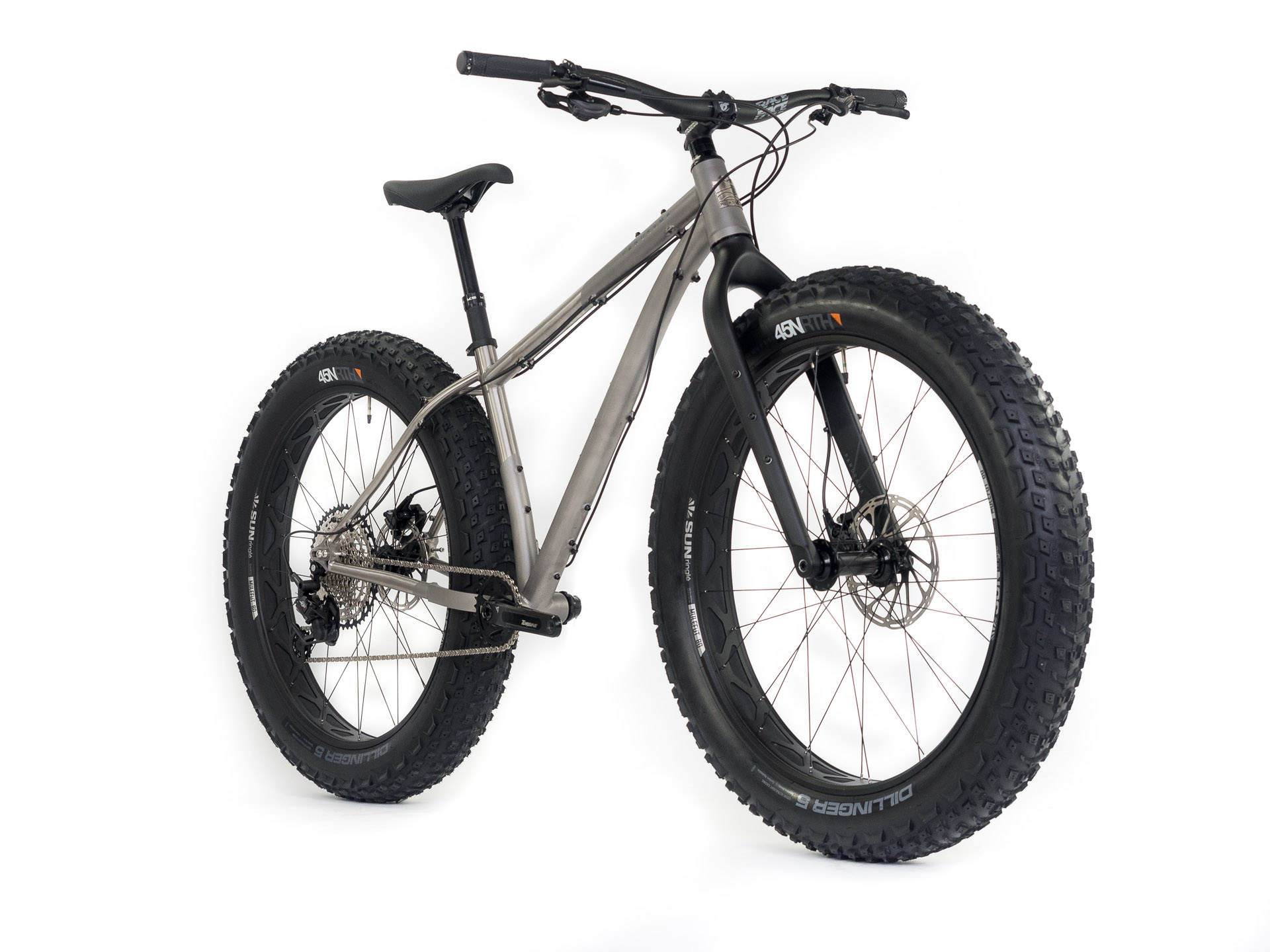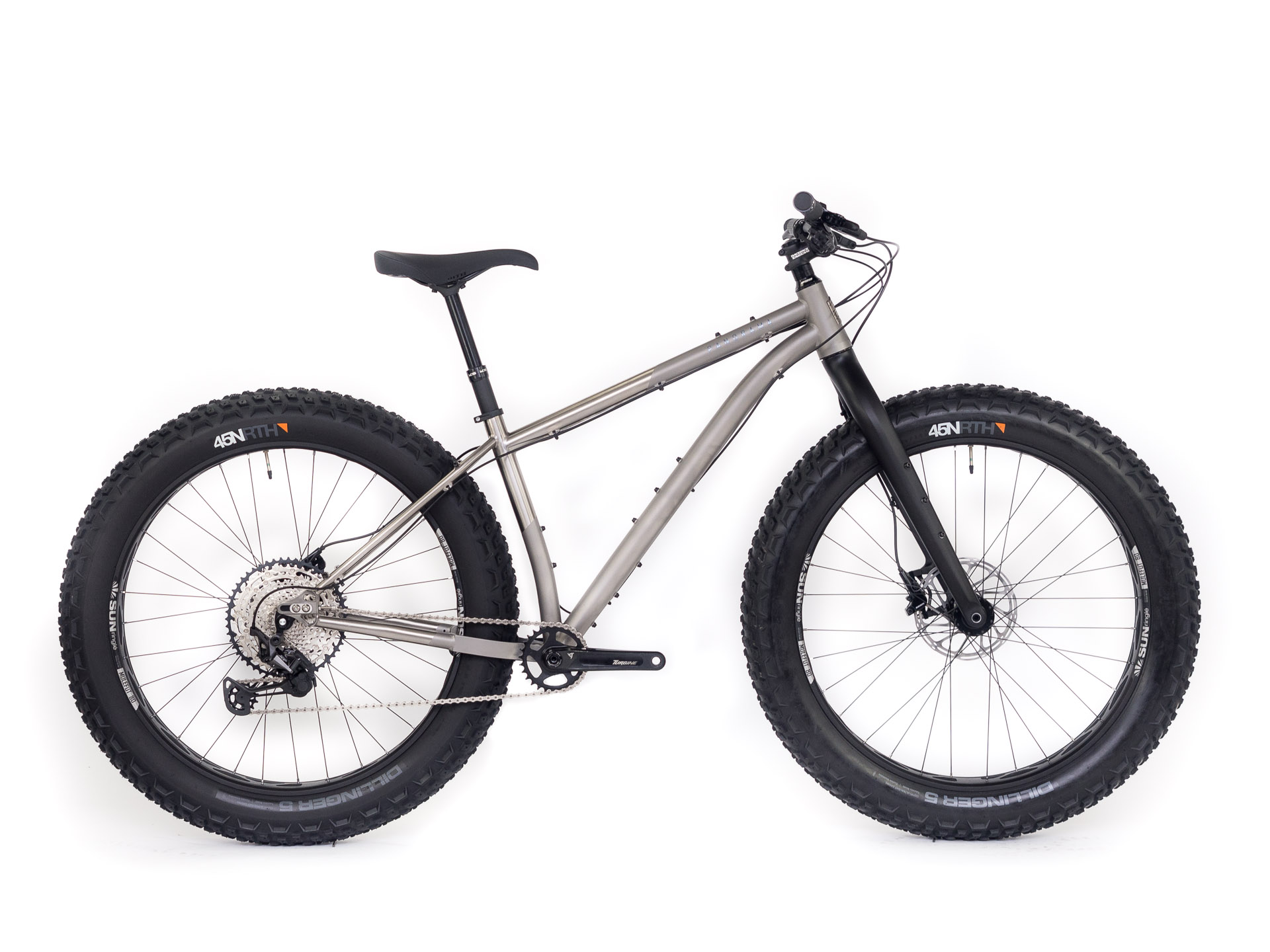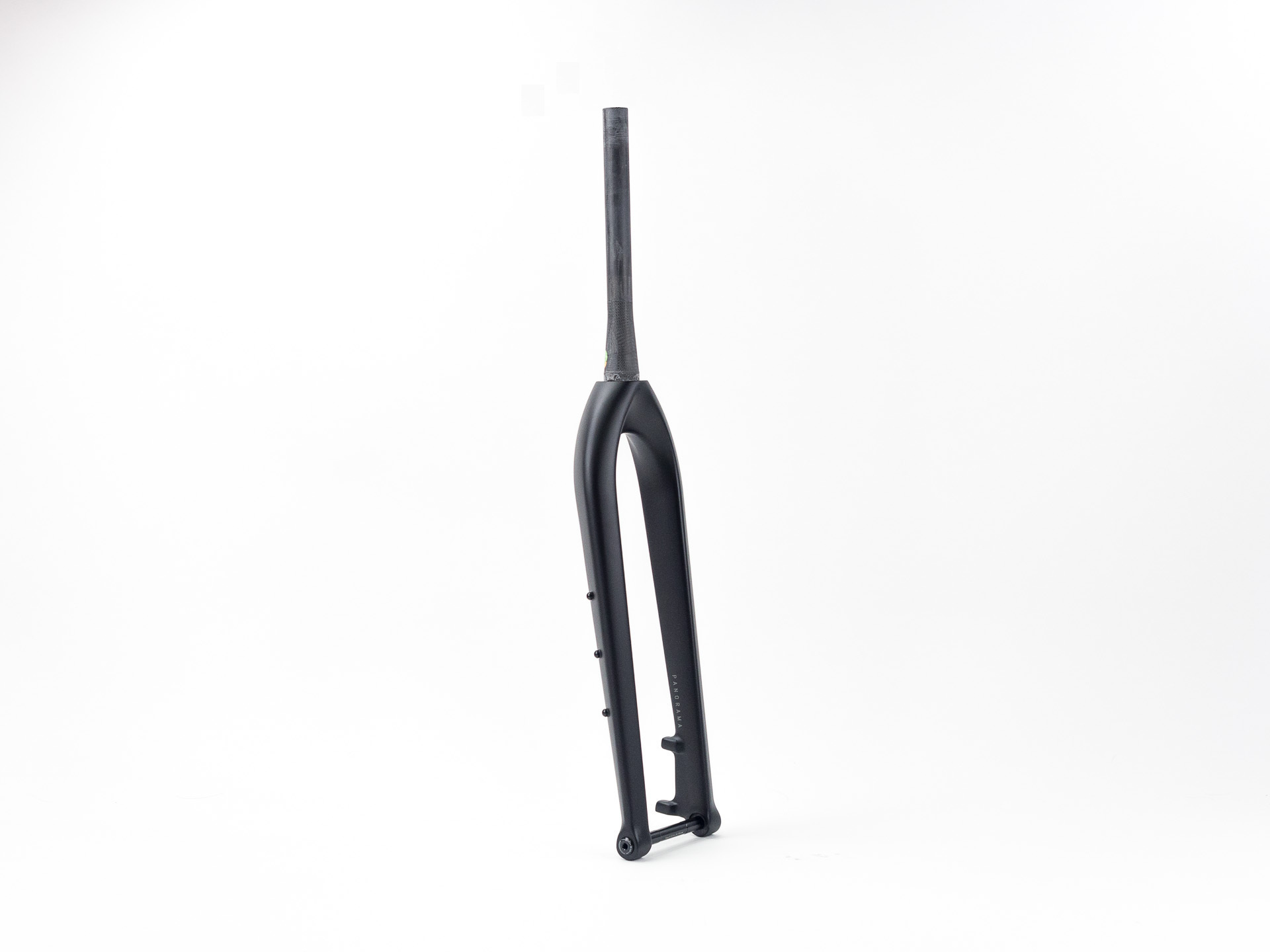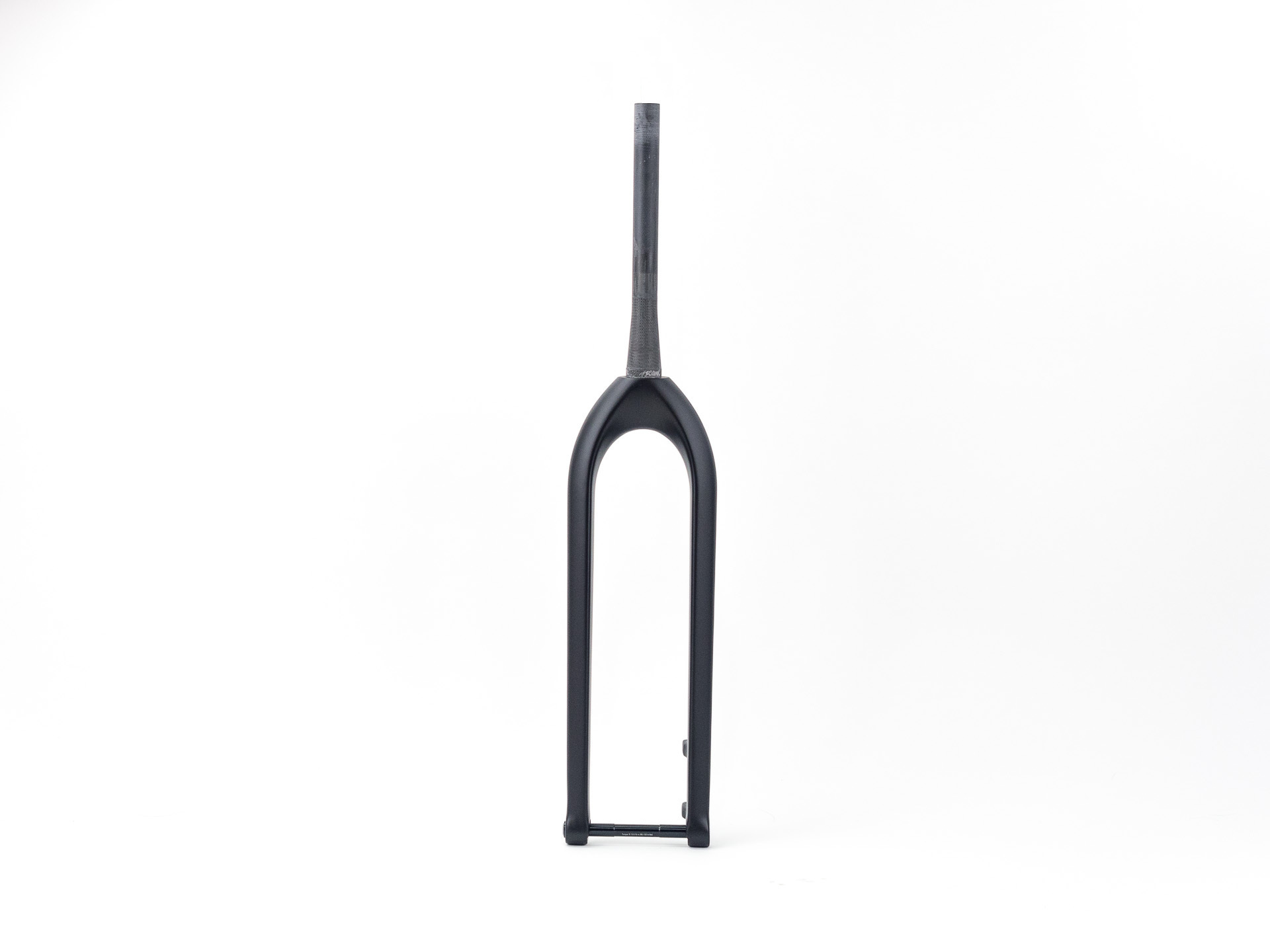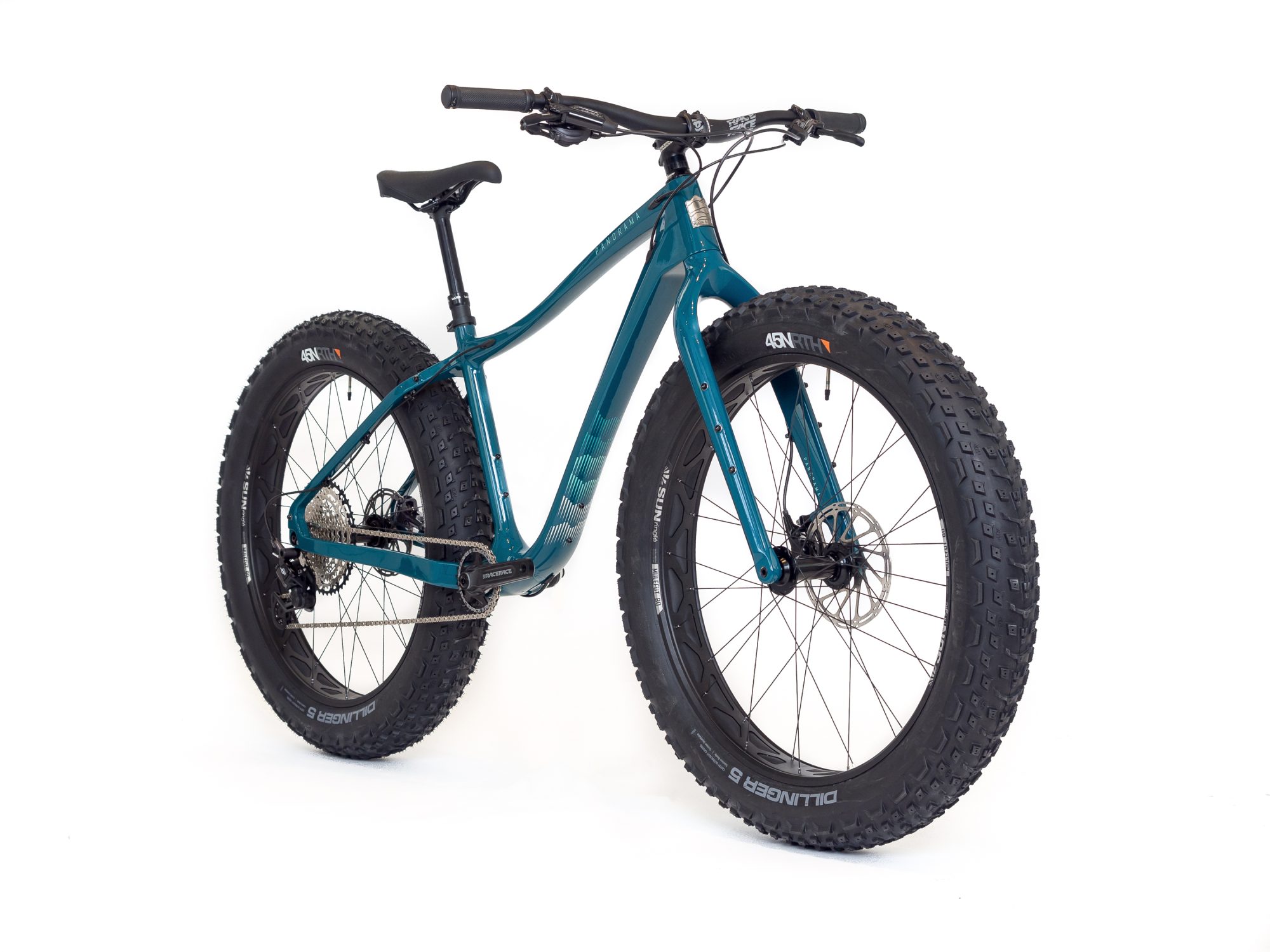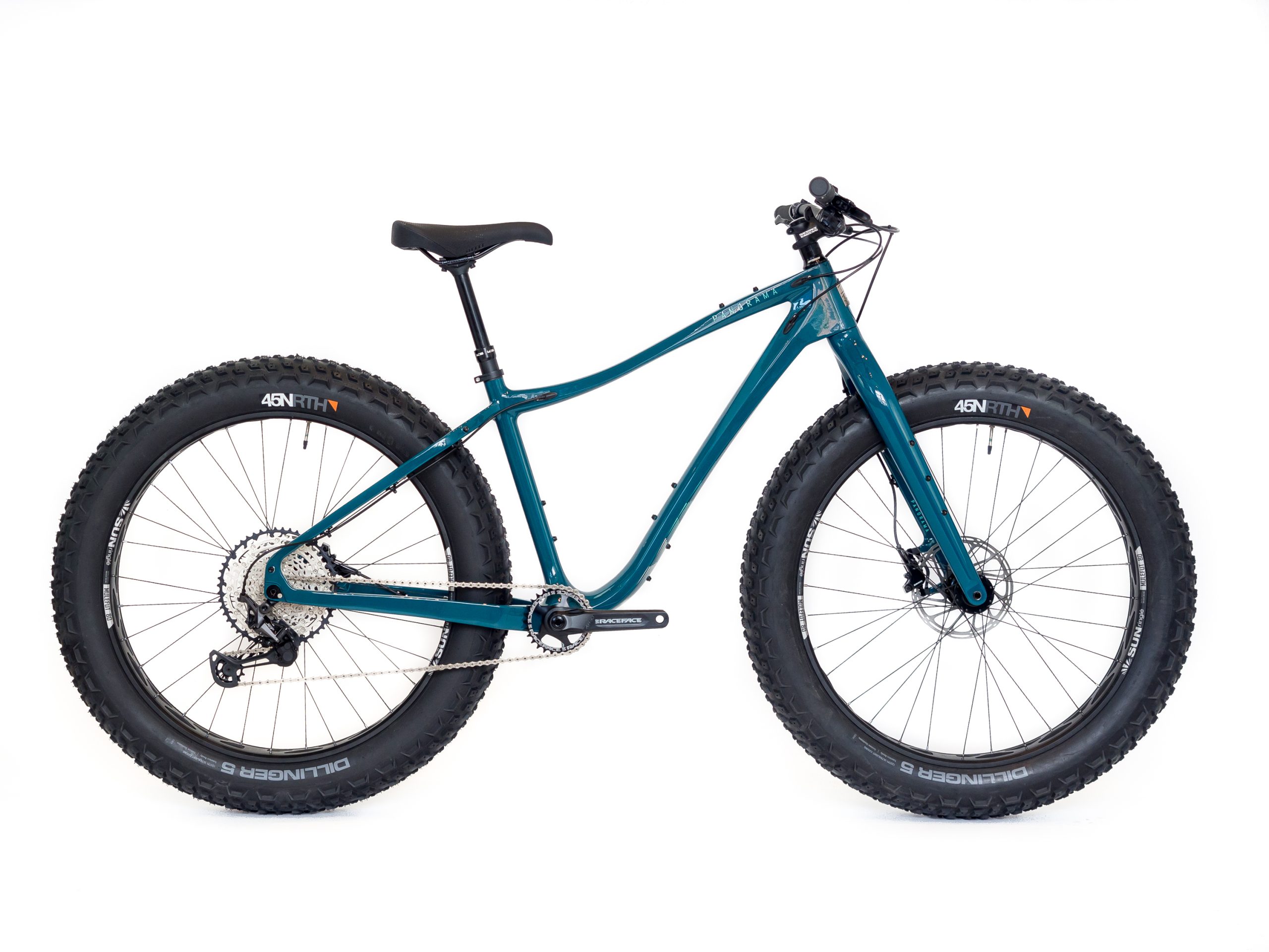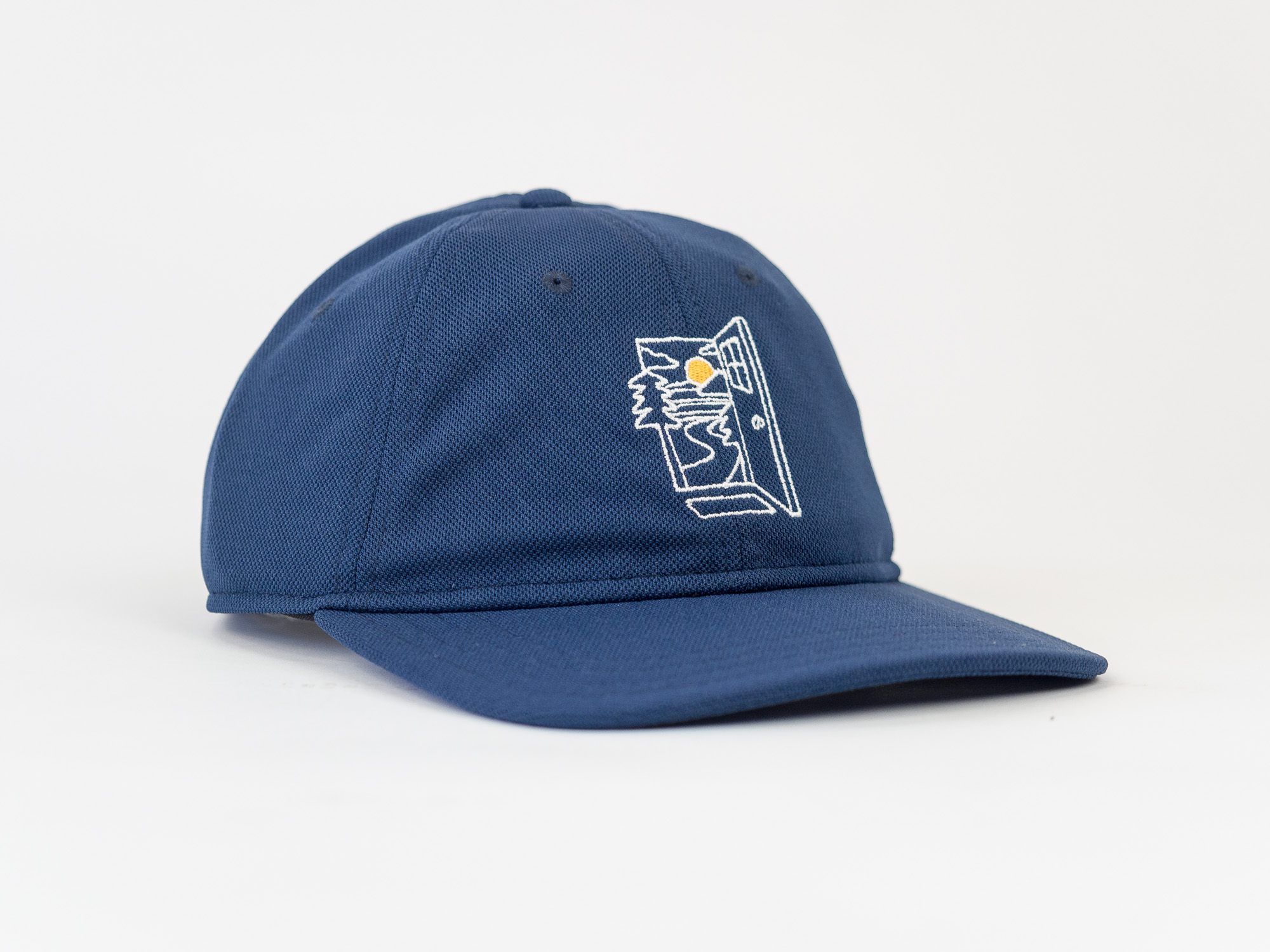Texte et photos par Cory Ostertag
Version française à venir
 Français
Français English
English
Texte et photos par Cory Ostertag
Version française à venir
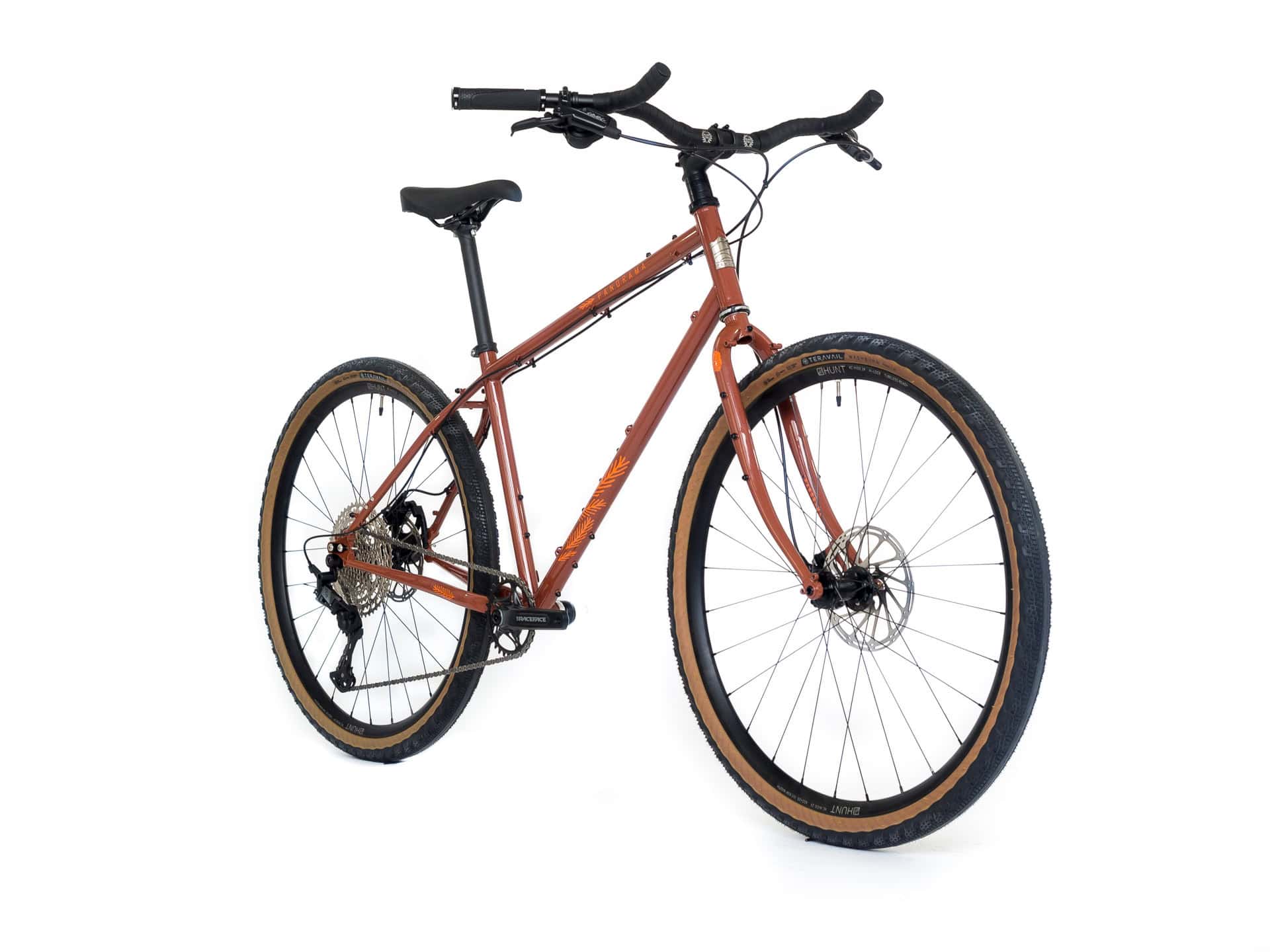
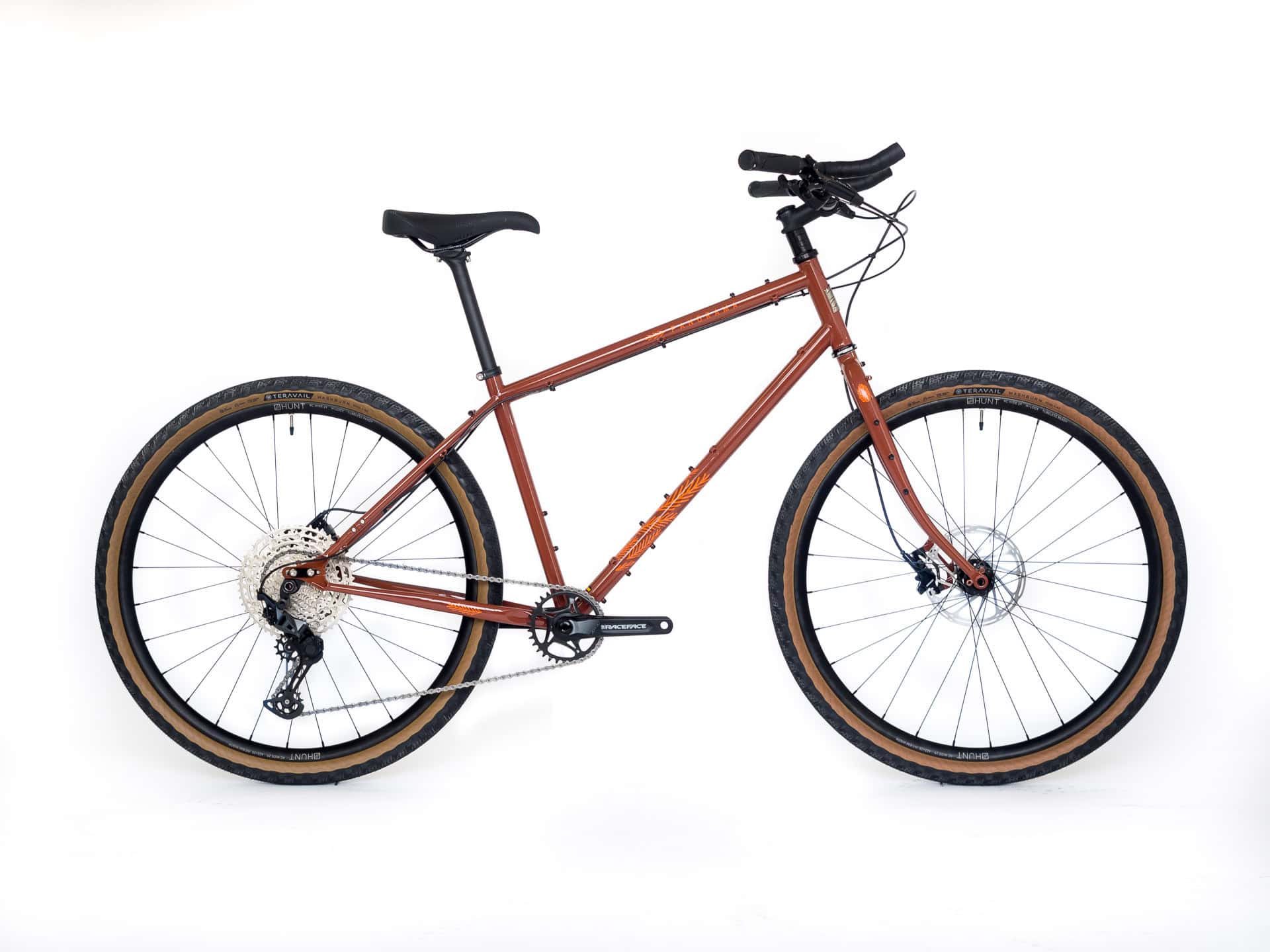
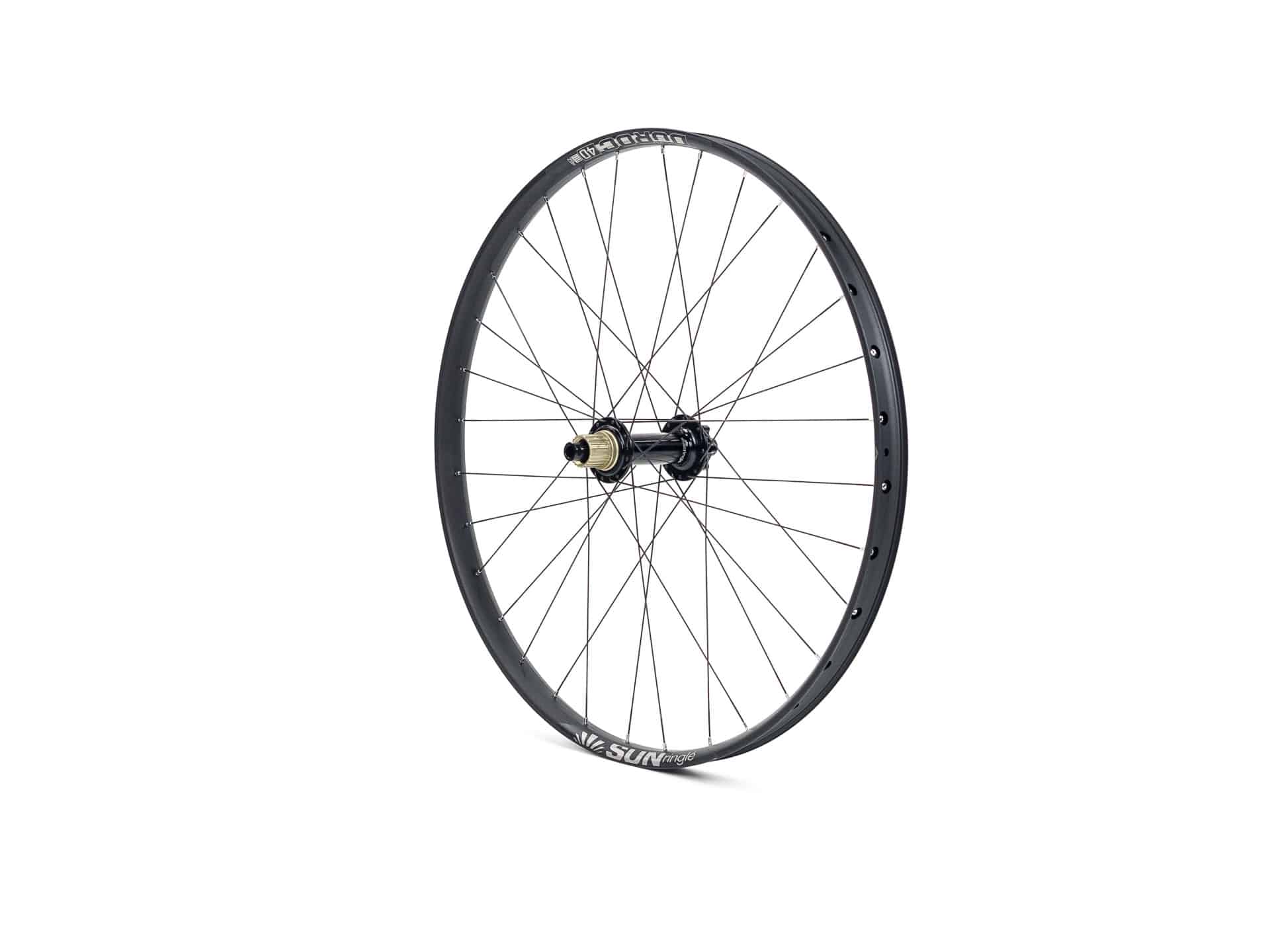
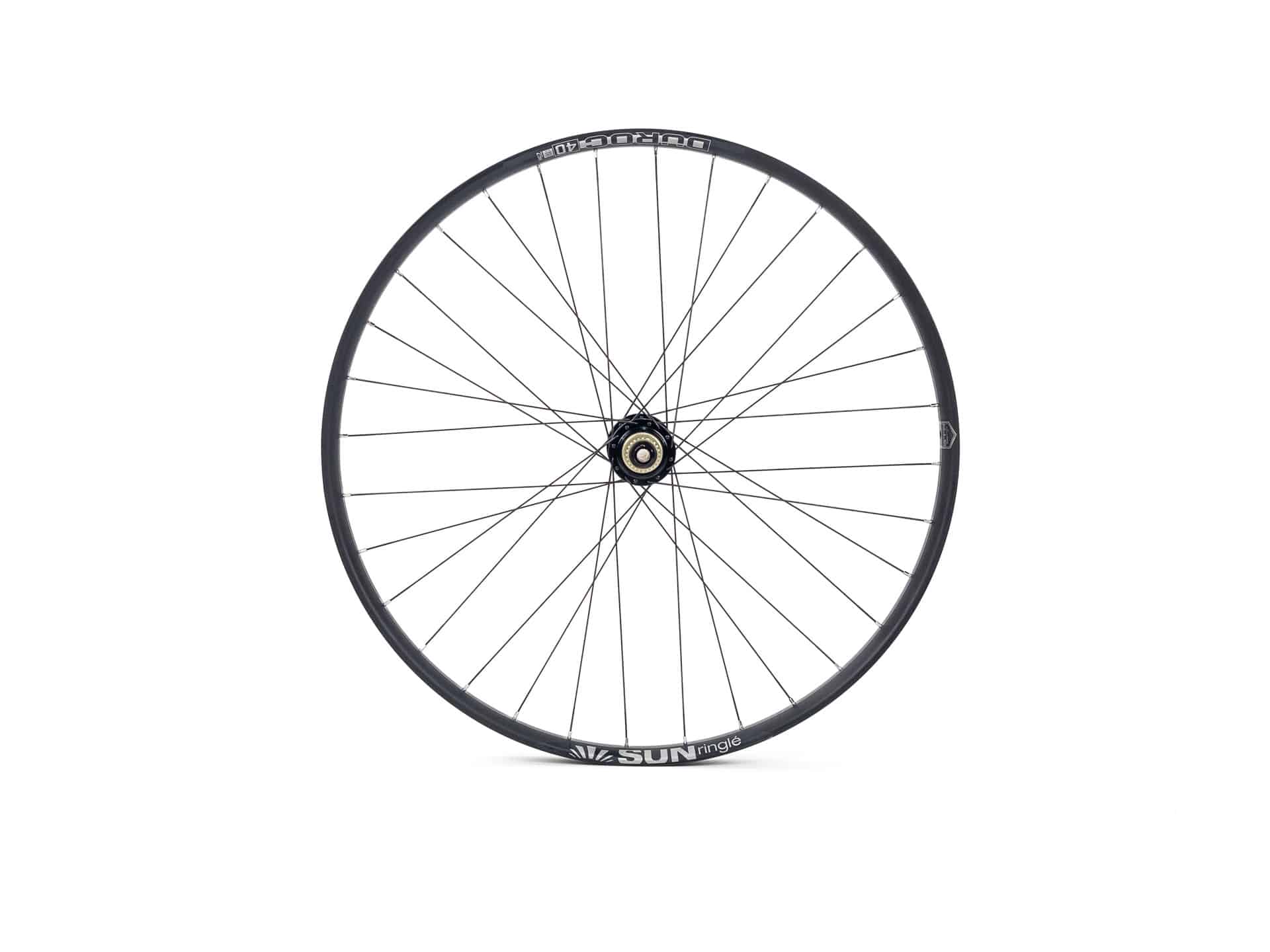
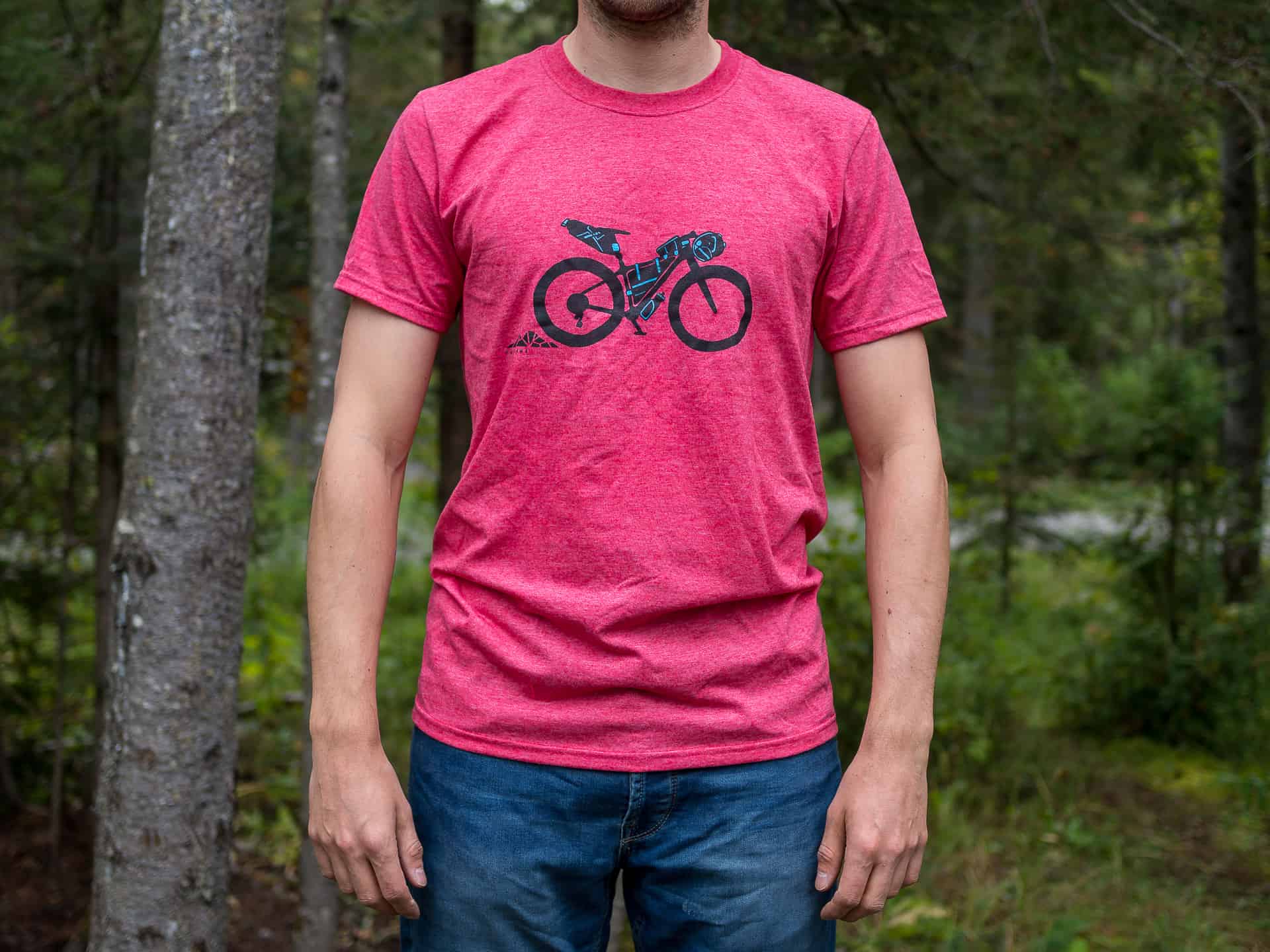
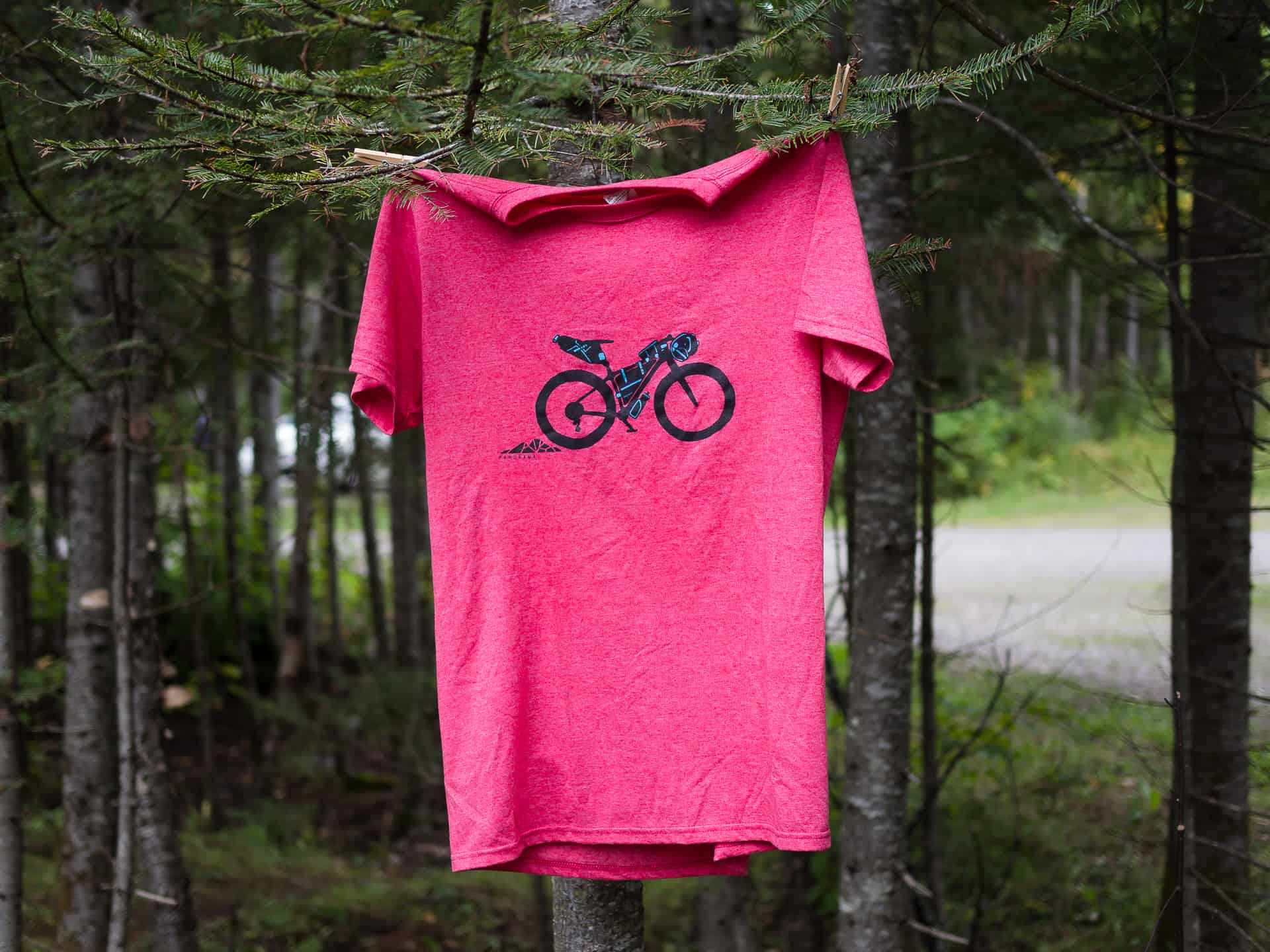
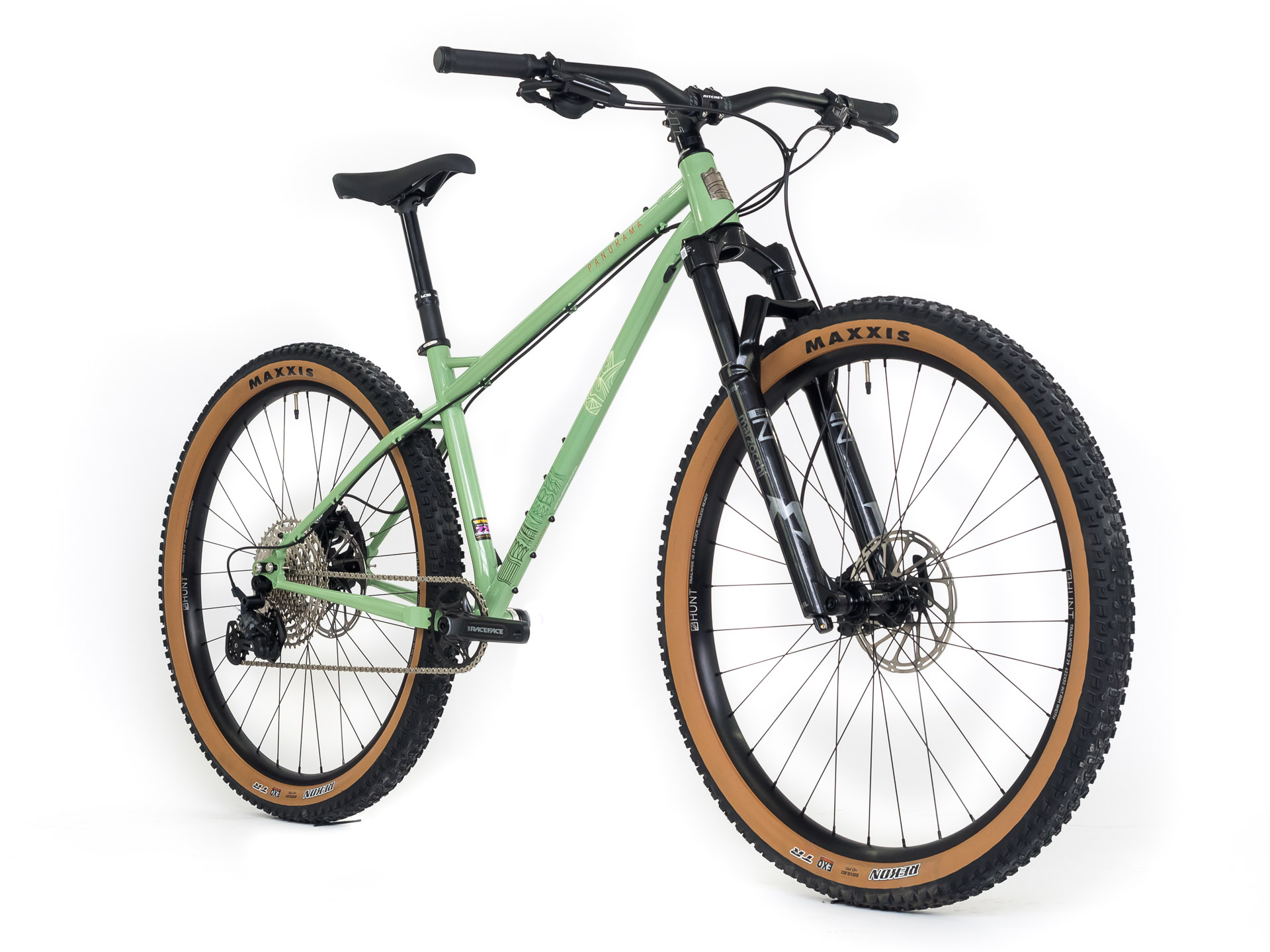
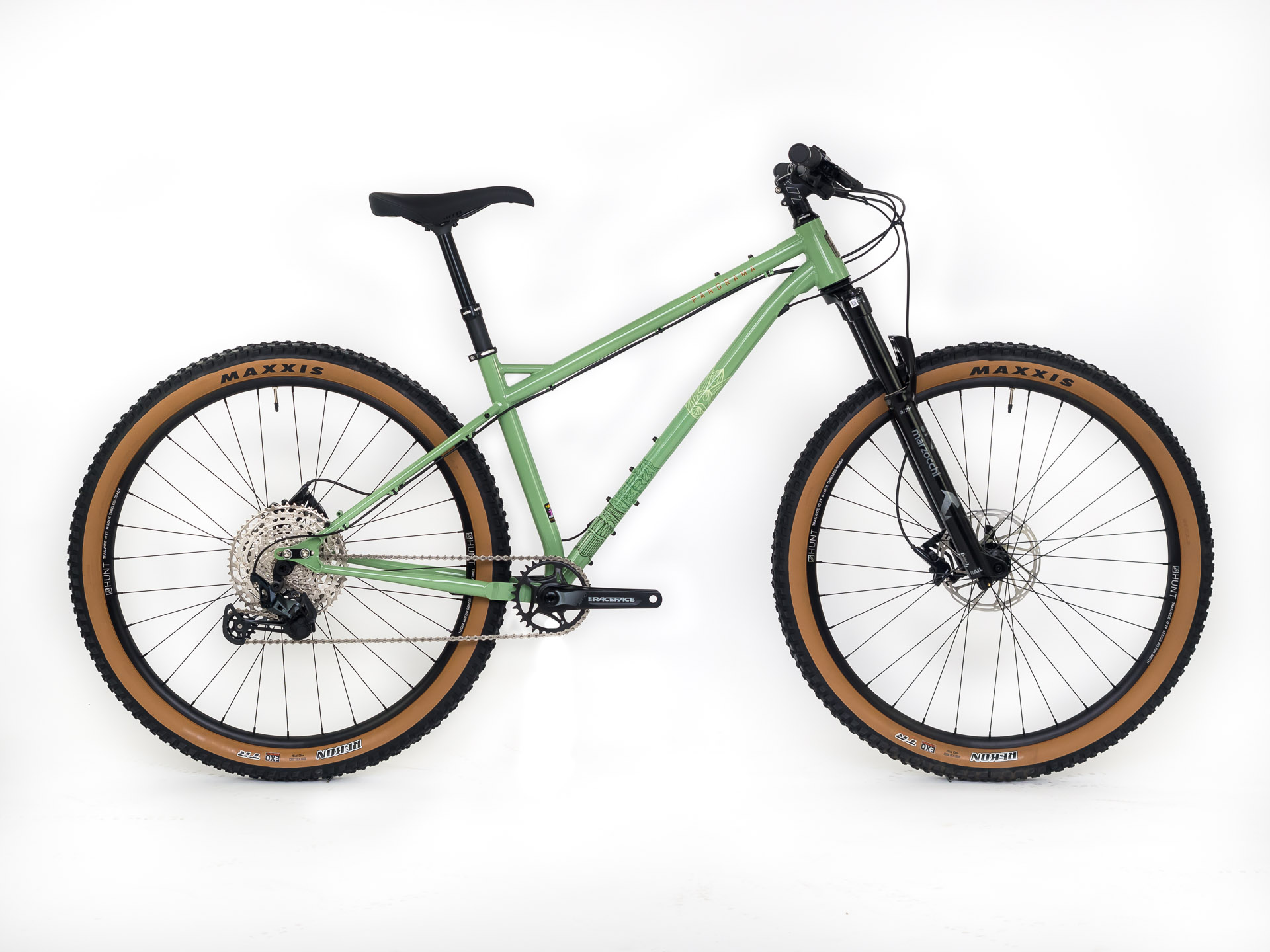
"Le Taïga est un vélo d'aventure digne de ce nom. Tout juste sorti de sa boîte, il est aussi parfaitement configuré pour dévaler les sentiers." Lire l'article complet ICI (en anglais).
À mi chemin entre un trail bike et un vélo d'aventure hors route, le Taïga est à vocation multi-usage. Emmenez-le dans vos sentiers de vélo de montagne locaux, ou pour une sortie bikepacking dans les chemins accidentés de l'arrière-pays.Notre sélection de tubes Reynolds 725 procure à ce cadre la bonne dose de souplesse et de réactivité, tout en gardant le poids raisonnable. Un angle de directions de 67deg et de selle de 75deg atteint l'équilibre entre une géométrie moderne et progressive, sans toutefois tomber dans un design trop radical. La longueur des bases arrière de 435mm offre une position centrée sur le vélo (ratio front-center versus rear-center), et peut être augmentée pour encore plus de stabilité lorsqu'un porte-bagage est utilisé.
* Vélo complet (débutant à 2949$ CAD) * L’ensemble cadre et fourche carbone est livrée avec les axes de roue, le jeu de direction installé, le collet de tige de selle et les protections de cadre. (1649$ CAD) * L'option cadre seulement est livrée avec l'axe de roue arrière et le collet de tige de selle. (1199$ CAD) * L’option Rohloff est livrée avec le moyeu Speedhub 500/14 A12 DB PM noir, le disque arrière 180mm, la manette de vitesse et tout le nécessaire pour installer le moyeu sur le cadre. (+1899$ CAD)